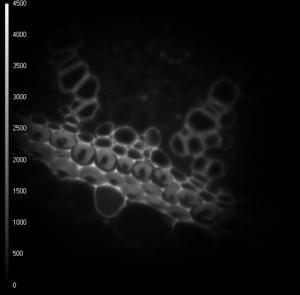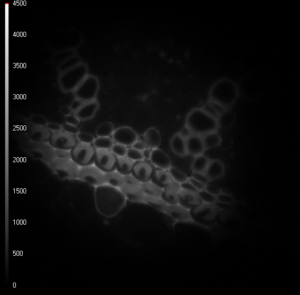< Back
Intensifier Control
Single-Image Fluorescence Lifetime Imaging Microscopy
LIFA Flim features a unique image sensor that was designed and optimized specifically for fluorescence lifetime imaging applications. It enables lifetime imaging at unprecedented frame rates with the single-image fluorescence lifetime imaging microscopy (siFLIM) method [1].
“We used a prototype of the vTAU camera to develop a method for acquiring quantitative lifetime images from a single exposure.” says professor Kees Jalink of the Netherlands Cancer Institute. “siFLIM takes advantage of the technical capabilities of the Toggel camera and simultaneously records two 180°-phase-shifted images. This allows for video-rate lifetime imaging with minimal phototoxicity and bleaching.”
Demonstration of the Lambert Instruments Toggel camera for single-image FLIM (siFLIM) detection of histamine-induced alterations in Ca2+ concentration. Tiny …
During a single exposure, the Toggel camera records two images. The electrons in each pixel of the sensor are toggled between two storage areas at the same frequency as the modulation frequency of the light source. This results in two images that are shifted 180° in phase with respect to each other.
Because both images are recorded simultaneously, there are no artifacts of cellular movements and there is a significant improvement in the photon efficiency of the image acquisition.


These two images of convallaria were recorded simultaneously, and because of the 180° phase shift between the two images, the recorded light intensity differs. The difference in light intensity between these two images depends on the phase shift and demodulation of the fluorescence light and can be used to calculate changes in the fluorescence lifetime of a sample [1].
[1] siFLIM: single-image frequency-domain FLIM provides fast and photon-efficient lifetime data, M. Raspe et al, Nature Methods 13, 501–504 (2016)


